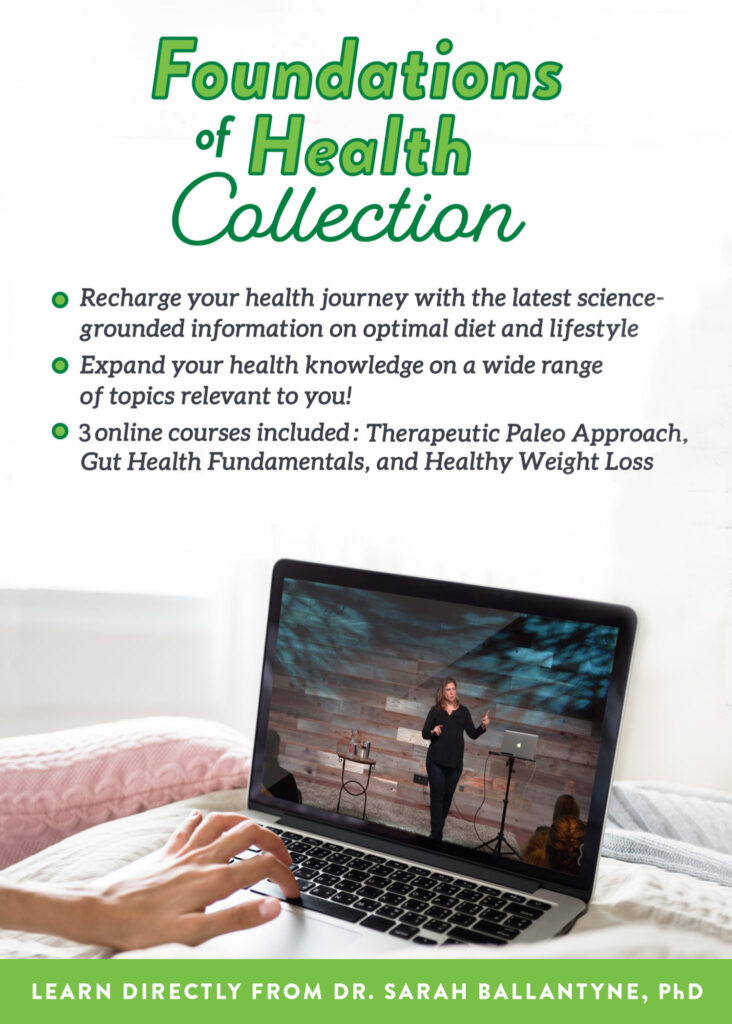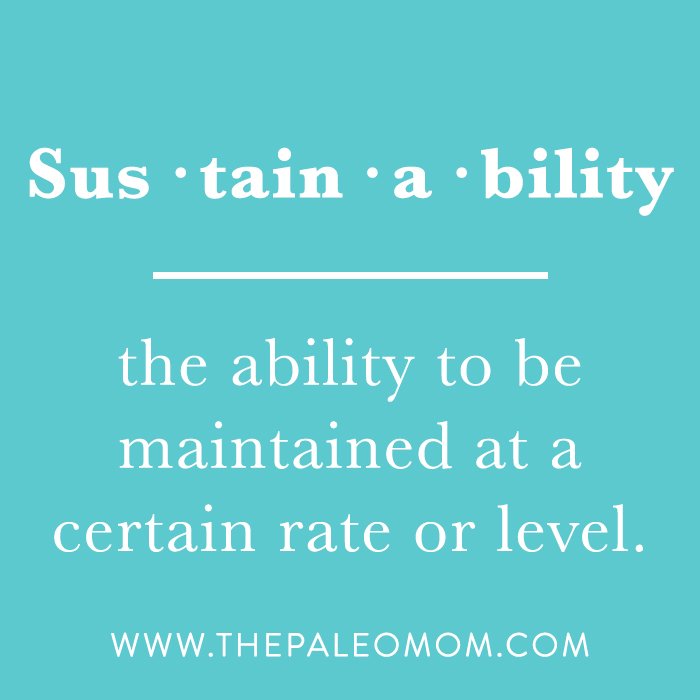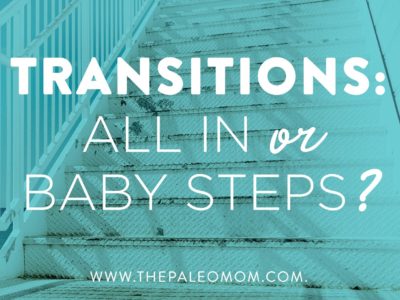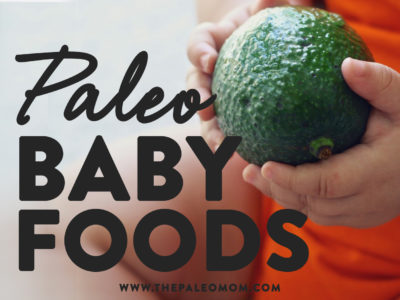As someone who recommends the Autoimmune Protocol as an effective treatment for autoimmune disease, I’m often asked how I recommend others approach the transition to this approach. Do I recommend jumping in with both feet? Or, is it better to transition slowly? In this post, I’ll address the differences between the “all in” and “baby steps” approaches to transition, and what I recommend in both cases. An important note: this post is directed specifically at an AIP audience, but these ideas can certainly be applied to any diet or lifestyle transition!
Table of Contents[Hide][Show]
Choosing a transition method is a matter of balancing compliance and sustainability.
 Compliance is a term used within the medical community and pharmaceutical industry referring to how well you stick to the plan (or in the case of medications, how well you take the medication as directed). Pharmaceutical companies use compliance as a means of quantifying how good their medication is. Compliance is seen as an indicator both of how well the drug works and how severe the side effects are. If the side effects are severe and the drug doesn’t really work that well, fewer people end up taking the medication as directed—i.e., compliance is low. If the medication works marvelously and there are very few side effects, more people take that medication on schedule—i.e., compliance is high.
Compliance is a term used within the medical community and pharmaceutical industry referring to how well you stick to the plan (or in the case of medications, how well you take the medication as directed). Pharmaceutical companies use compliance as a means of quantifying how good their medication is. Compliance is seen as an indicator both of how well the drug works and how severe the side effects are. If the side effects are severe and the drug doesn’t really work that well, fewer people end up taking the medication as directed—i.e., compliance is low. If the medication works marvelously and there are very few side effects, more people take that medication on schedule—i.e., compliance is high.
When it comes to the Autoimmune Protocol, compliance means how closely the way you eat follows the protocol. Certainly, there is some wiggle room (for example, in the amount of fruit you eat). And you may know that certain foods nixed in the AIP work really well for you . For example, maybe you know that you do really well with fermented, raw, grass-fed dairy so decide to keep that in your diet even from the beginning. These choices don’t fall under the banner of compliance. Compliance, in this instance, means how often you eat something you know is not good for you, that you know will cause a reaction or a worsening of symptoms, or that you know will slow the healing of your gut and the rest of your body.
Save 80% Off the Foundations of Health
Expand your health knowledge on a wide range of topics relevant to you, from how to evaluate scientific studies, to therapeutic diet and lifestyle, to leaky gut and gut microbiome health, to sustainable weight loss, and much more!!!

 Sustainability is the ability for something to be maintained at a certain rate or level. This can mean many things depending on which aspect of the Autoimmune Protocol we are talking about (environmental sustainability, economical sustainability, etc.). In the context of implementing the diet and lifestyle changes recommended on the AIP, the discussion of sustainability really means individual sustainability, or rather: your ability to stick with these changes for the long haul. Are you more likely to stick with something if you approach it the same way you would breaking a bad habit—investing effort to make a change until such a time as a habit is formed and the change now feels effortless? (See Habit Formation and New Years Resolutions) Are you more likely to stick with something if you ease into it and making one manageable change at a time? Are you more likely to stick with the AIP if you see quick results? Can you be patient and remain optimistic if you don’t see huge results right away?
Sustainability is the ability for something to be maintained at a certain rate or level. This can mean many things depending on which aspect of the Autoimmune Protocol we are talking about (environmental sustainability, economical sustainability, etc.). In the context of implementing the diet and lifestyle changes recommended on the AIP, the discussion of sustainability really means individual sustainability, or rather: your ability to stick with these changes for the long haul. Are you more likely to stick with something if you approach it the same way you would breaking a bad habit—investing effort to make a change until such a time as a habit is formed and the change now feels effortless? (See Habit Formation and New Years Resolutions) Are you more likely to stick with something if you ease into it and making one manageable change at a time? Are you more likely to stick with the AIP if you see quick results? Can you be patient and remain optimistic if you don’t see huge results right away?
How you transition to the AIP has an impact on both compliance and sustainability, but what that impact is will vary from person to person. I think the first step to a successful transition is understanding ourselves, knowing our personal history and assessing the roadblocks we know could get in our way. Then, we can choose a route based on our desired outcome and timeline.
What’s Your History?
 I understand the urge to jump wholeheartedly into a healing protocol, especially when we are dealing with a new diagnosis or frustrating symptoms. But when we take just a short amount of time to place this proposed transition in the context of our past, present and future, we often find much greater success.
I understand the urge to jump wholeheartedly into a healing protocol, especially when we are dealing with a new diagnosis or frustrating symptoms. But when we take just a short amount of time to place this proposed transition in the context of our past, present and future, we often find much greater success.
When I adopted a Paleo lifestyle 5 years ago, I did so with complete gusto. I committed myself fully to the protocol for 90 days, chose my start date, stuck with it, and followed my plan to the letter. I knew this would be successful for me (okay, maybe I didn’t think it would be quite THIS successful, LOL!) because I had committed to other protocols in similar ways in the past.
If we know that eliminating temptation takes the effort of “willpower” out of the equation and simplifies our life, then a cold-turkey, all-in approach may be best (and ditching all the off-plan foods from our fridges and pantries!). However, if gentle habit formation, i.e. giving up one thing at a time and seeing results, has yielded positive change in the past, this approach may be best. Likewise, it can be helpful to assess our future goals when deciding how to approach change. If you’re taking on the protocol around the holidays, a cold-turkey approach could help you simply decide that non-compliant treats are off the table—or, it could frustrate and tempt you so much that you give up on the whole thing entirely.
The method of transition is totally your choice. This is your journey to health, and you get to choose the route. So think about what you know about yourself: Is it better for you to make gradual changes, or will drawing out the process make you feel frustrated and likely to give up before you reach your goal? Are you a jump-in-with-both-feet kind of person, or will the initial rough couple of weeks be more than you can handle? Do you do well with a strict set of rules, or will that make you want to rebel? If you aren’t sure, there are a few more aspects of transition to consider to help you reach a decision.
There’s no way for me to make these determinations for you, and so there is no way for me to tell you which approach will be best for you. What matters is that you start in a way that will be sustainable for you.
Yielding Faster Results
 I believe that adopting some of the guidelines of the Autoimmune Protocol will have more positive health benefits than adopting none of them. So, there’s really no wrong way to approach your transition if you eventually intend to make that transition complete.
I believe that adopting some of the guidelines of the Autoimmune Protocol will have more positive health benefits than adopting none of them. So, there’s really no wrong way to approach your transition if you eventually intend to make that transition complete.
However, I should probably emphasize at this point that many people will not see improvements in their autoimmune disease symptoms until they remove all problem foods from their diets. So, if you decide to transition one step at a time, you can’t expect to see huge results until you’ve taken all the steps (although some people will see incremental improvements with each step). If drawing out the transition process and potentially not seeing benefits with each step may discourage you and make you lose your motivation to continue, then jumping in with both feet would be a better strategy for you. And you can surely start the transition by going step by step and then jump in with both feet if or when it feels right.
Jumping into the Autoimmune Protocol with both feet can be a little jarring, but there’s the advantage of having to force yourself to adjust quickly and typically seeing dramatic improvements earlier. Be warned, though, that even when you “get the transition over with” this way, some people will experience some lag time while their bodies adjust to new macronutrient ratios and new foods before they start to see improvements—but many others report phenomenal improvements in their symptoms within the first few days of transitioning. At the other end of the spectrum, rapid transitions can also cause symptoms that resemble Jarisch-Herxheimer reactions for a small number of people (this is discussed in The Paleo Approach).
What’s more, there’s really no better method than elimination and reintroduction for determining which foods cause you trouble (or which healthy lifestyle habits will provide the most benefit). While there are general guidelines—nightshades tend to contribute to joint pain while eggs and nuts and seeds tend to create more digestive upset—there are no hard and fast rules. You simply won’t know until you try (for more information, see What Are Nightshades?, The “Why’s Behind the Autoimmune Protocol: Nightshades, The Whys Behind the Autoimmune Protocol: Nuts and Seeds and The Whys Behind the Autoimmune Protocol: Eggs).
If you are looking for fast relief and a noticeable turnaround in your symptoms, cold-turkey is your best best.
Which Steps Come First?
 If you do choose to take the “baby steps” path, I hope you can do so without guilt or mental anguish. Even one small step toward better health can have a profound impact on your health and wellbeing, but only if you can successfully eliminate stressors like guilt!
If you do choose to take the “baby steps” path, I hope you can do so without guilt or mental anguish. Even one small step toward better health can have a profound impact on your health and wellbeing, but only if you can successfully eliminate stressors like guilt!
So, which steps yield the biggest results?
Surprisingly, I sometimes find that what we add in can be more impactful than what we cut out. We may find incredible health improvements by simply adding another serving of veggies to each meal and including organ meats, bone broth or more offal to our weekly meal plan (see The Importance of Nutrient Density, Why are Veggies Crucial On the AIP and Why Everyone Should Be Eating Organ Meat ).
As far as eliminations, gluten should be our first target. Gluten is highly stimulating for the immune system (see Why Grains Are Bad Part 1, Lectins and the Gut, The Link Between Gluten and Obesity and Gluten-Free Diets Can Be Healthy for Kids and How to Avoid Wheat and Gluten). I also find that many people struggle with dairy, so if you have not eliminated that doing so may be helpful (see The Great Dairy Debate and 5 Easy Swaps for Your Favorite Dairy Products). Also make sure you know about gluten cross-reactors, see Gluten Cross-Reactivity: How your body can still think you’re eating gluten even after giving it up.
Nightshades are a great basic starting point as well, as they tend to be problematic for many people with autoimmune disease (see The “Why’s Behind the Autoimmune Protocol: Nightshades). Egg whites are another food I recommend eliminating, based on anecdotal evidence (see The Whys Behind the Autoimmune Protocol: Eggs). And alcohol feeds undesirable strains of bacteria in the gut while promoting a leaky gut barrier (see The WHYs behind the Autoimmune Protocol: Alcohol).
From there, you may make choices based on your personal history. If you’ve already done an elimination diet with eggs, perhaps you’ll try omitting nuts and seeds instead. If you’ve previously done a food sensitivity panel and no nuts and seeds came back positive, you may wish to keep those in your diet now and focus on kicking nightshades to the curb. And, if you’re approaching the AIP without having tried a standard Paleo diet first, you may find great relief of your symptoms with that alone!
And, what if you feel like you can you give up most, but not all, of the excluded foods? Then, you’ll want to read Making Healthy Choices: What’s Your Currency?)
 The Bottom Line
The Bottom Line
There’s no “right” or “wrong” way to approach the AIP, or any dietary change. If our personal history tells us that a cold turkey approach will eliminate temptation, or faster results are our goal, then the “all in” approach might be more beneficial. However, if incremental changes are easier for us to handle, those little changes will yield far more progress than no changes at all. We shouldn’t let our opposition to a “cold turkey” approach keep us from seeking better health!
Overall, we must be willing to assess our progress and make changes when necessary. If you aren’t approaching the AIP or any diet change cold-turkey, you may have to wait to see results. Knowing this may help us make adjustments based on our goals and, ultimately, help us stick with healthy changes over the long term.
How you transition is up to you. How you approach changing your diet and lifestyle will depend on how you are eating now, your personality, how sick you are, how comfortable you are in the kitchen, how strong your support network is, and how accessible these changes are for you. There is no wrong way to transition as long as you reach your goal in the end.









